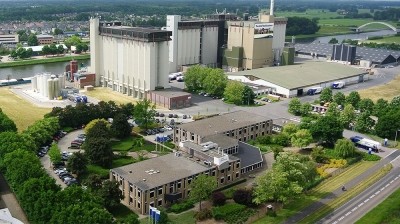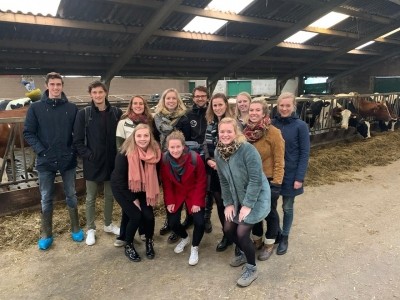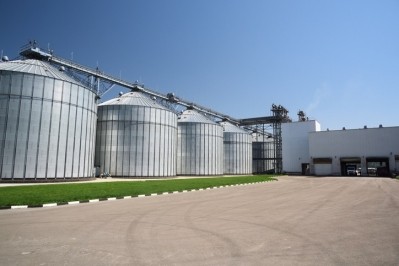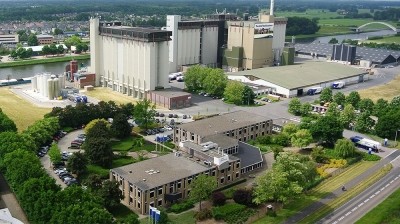ForFarmers to see redundancies and feed mill closures

The company is hoping to realize €10m in cost savings by 2021 on 2018 levels through this rationalization process.
Poland is the only one of the markets it operates in that won’t be affected by these group-wide efficiency plans. Outside of that market, the organization is operating in the Netherlands, Germany, Belgium, and the UK.
The company took its results for 2018 and the current market conditions into consideration for this cost-cutting approach.
In releasing its FY2018 financial results, ForFarmers said the year was one of both positive and negative developments.
CEO, Yoram Knoop, said the company made progress in acquisitions – four in total: Tasomix in Poland, Maatman and Van Gorp Biologische Voeders in the Netherlands and Voeders Algoet in Belgium.
“Consequently, we are now operational in five countries and have more sales opportunities in the expanding poultry sector."
Its feed volumes are more equally divided over the ruminant, swine and poultry sector, and the compound feed producer sold over 10 million tons of feed in 2018, a European feed manufacturing first.
Logistics costs
But the CEO said ForFarmers saw the impacts in autumn last year of the extremely warm and dry summer, with the company hit then by higher inbound logistics costs due to low river levels and volatility in raw material prices, which it was unable to fully pass on to customers, specifically in the Netherlands and Poland.
Such developments had a major impact on underlying earnings before interest, taxes, depreciation, and amortization (EBITDA), which was lower than in 2017.
“Due to a temporary unfavorable purchase position, we expect our 2019 first half year results to show a strong decline compared to the 2018 first half year results, we have confidence in the outlook thereafter."
Key details of ForFarmers results 2018
- Total Feed volume: up 4.9% to 10.0mT, on acquisitions (2.8%) and organic growth (2.1%);
- Compound feed volume: up 4.2% to 7.0mT, mainly due to acquisitions;
- Gross profit: up 5.6% to €443.4m, of which 2.3% from acquisitions (predominantly in H2) and 3.6% like-for-like growth (stronger in H1);
- Underlying EBITDA: down 1.3% to €100.1m (down 1.0% at constant currencies) despite positive contributions from acquisitions;
- Underlying earnings per share: flat versus prior year;
- Dividend proposal: €0.283 per ordinary share and a special dividend of €0.017 per share. Total dividend therefore €0.30 per ordinary share, equal to 2017;
- Working capital: increase by €7.m, due to acquisitions (+€30.4m) and like-for-like improvement (-€23.3m).
Market trends in 2018
ForFarmers reported that average milk prices on the Continent were lower in 2018 than in 2017, although the five-year average is still at an acceptable level.
Average milk prices in the UK were 2% higher than the year before.
Prices for pigs (finishers) were on average 12% lower than in 2017, it noted. The decline was most pronounced in Belgium, where pig prices dropped by 20% in the fourth quarter of 2018 as a result of import restrictions imposed by Asian countries following the outbreak of African swine fever (ASF) among wild boars, it said. Average prices for piglets were substantially lower (YoY) in the first three quarters of 2018 but recovered in the fourth quarter as the gap between supply and demand narrowed. This was due to fewer piglets being born in the exceptionally hot summer.
Up to Q4 2018, ForFarmers said broiler producers benefited from slightly higher average prices for their animals than in 2017, mainly on the back of stronger export demand. At the end of 2018 prices declined, however. Prices of broilers and turkeys in Poland fluctuated more than in previous years, particularly in the second half of 2018. As a result, farmers did not always immediately restock with young animals at the end of each breeding cycle.
Average egg prices declined in 2018 compared to the very high levels seen during 2017, when there was a shortage of eggs due to the fipronil case in a few European countries.
Market outlook
Global demand for animal protein continues to increase on the back of a growing world population and increasing prosperity, said ForFarmers.
Consumption of animal protein is virtually stable in Europe, where the agricultural sector is coming under growing social pressure, it added.
“Increasing regulatory obligations are leading to extra investments and consequently to consolidation among farming businesses, which in its turn results in changing client needs and requirements.”
While interest in alternative protein sources is growing noticeably, studies show that the average per capita consumption of animal proteins has not been declining in Europe. The long-term global prospect for the ruminant sector remains positive, said the company.
As domestic consumption in Europe is stabilizing, production volumes need to be directed more to export, it stressed.
“Consumers in Europe are increasingly interested in quality, provenance and organic food and in some countries in non-GMO foodstuffs.”
In that context, ForFarmers said it has reopened a mill in the Netherlands fully dedicated to manufacturing non-GMO feed.
It expects the dairy herd in the Netherlands to grow again in the first half of 2019 as Dutch dairy farmers gain more insight into the impact of the phosphate legislation on their milk production volumes.
Global demand for pig meat is still growing, but European consumption of pig meat is slowly declining, said the company. The swine herd in the Netherlands and in Germany is declining. The export of European pig meat to China could be positively impacted by the global tensions in trade surrounding import tariffs. Pig herds in China are still declining following an outbreak of ASF, which may create an additional export opportunity for Western European farmers.
However, ASF, it noted, has also been detected in Eastern Europe and also among wild boars in Belgium. This is a concern for the EU pig sector, it added.
Consumers are increasingly turning to chicken meat and eggs as a price-friendly alternative to other protein types. In northwest Europe, local demand is growing free range and organic poultry and egg products, it highlighted. In addition, conventional production for export purposes continues to grow. New slaughter capacity will come on stream in Poland in the coming years, which is expected to lead to greater demand for compound feed, said ForFarmers.









